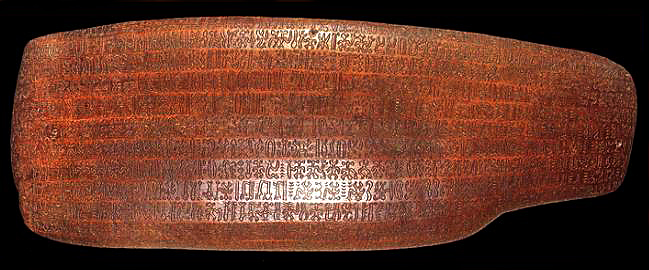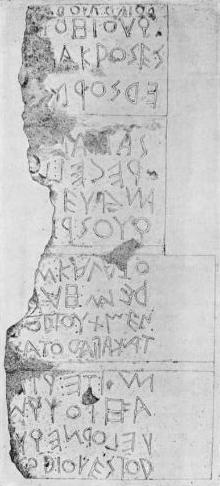Boustrophedon is a style of writing in which alternate lines of writing are reversed, with letters also written in reverse, mirror-style.

The original term comes from Ancient Greek: “like the ox turns [while plowing]”. It is mostly seen in ancient manuscripts and other inscriptions. It was a common way of writing on stone in Ancient Greece.
A fun variation is the reverse boustrophedon: the text in alternate lines is rotated 180 degrees rather than mirrored.
The reader begins at the bottom left-hand corner of a tablet, reads a line from left to right, then rotates the tablet 180 degrees to continue on the next line from left to right again. When reading one line, the lines above and below it appear upside down.

I heard about it on a podcast about the Rapa Nui people of Easter Island. They use used the reverse boustrophedon style for their system of glyphs called Rongorongo, which remains undeciphered.




I think you missed the joke.
(Also, regarding trees on Easter island, it’s a popular theory, but if I remember correctly it has been a bit debunked in recent years)